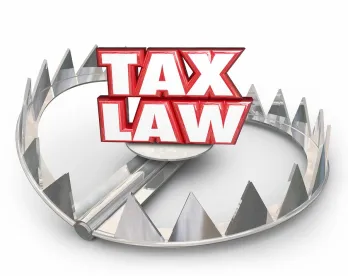On November 9, 2022, in a 15-2 decision, the Tax Court held that the IRS improperly issued Notice 2017-10 in Green Valley Investors, LLC, et al. v. Commissioner of Internal Revenue, 159 T.C. No. 5. The Notice designated “syndicated” conservation easements as “listed transactions,” or a potential tax-avoidance schemes. Once a transaction is designated as a listed transaction, taxpayers and their advisors are obligated to provide the IRS with information and documentation related to the transaction and may be subject to additional accuracy-related penalties in IRS enforcement actions.
The Green Valley Investors decision evaluated a combined four cases arising from related syndicated conservation easements. In 2011, Bobby A. Branch and Elizabeth N. Branch bought over six hundred acres of land in North Carolina. Mr. Branch contributed portions of the land to four partnerships and created private placement offerings for investors to buy interest in each partnership in 2014 and 2015. The partnerships then donated conservation easements on the land, resulting in noncash charitable deductions for each investor based on the amount of their investment. Regarding each partnership, the IRS disallowed these deductions, totaling over $90 million, and issued accuracy-related penalties under Internal Revenue Code, Section 6662.
Mr. Branch, on behalf of each partnership, challenged this determination in Tax Court, in which he argued, in part, that the IRS improperly issued Notice 2017-10 without complying with the administrative requirements of the Administrative Procedures Act (“APA”). Under the APA, when agencies issue legislative rules, they are required to formally issue a notice of proposed rulemaking and provide the public with the opportunity to comment before issuing a final rule. The Tax Court held that the IRS did not comply with the requirements of the APA when issuing Notice 2017-10 and as such the penalties imposed against Green Valley Investors stemming from the notice were improperly assessed under an invalid legislative rule. Although the jurisdiction of the Tax Court only extends to the particular taxpayers before the Court, the Tax Court in its decision clearly stated that it intends to apply its holding to all similarly situated taxpayers who come before the Court in the future.
Conservation easement deductions were not subject to the additional penalty under Section 6662A until late 2016, when the IRS issued Notice 2017-10. Section 6662A penalties apply where “a taxpayer has a reportable transaction understatement for any taxable year” and adds a 20 percent accuracy-related penalty. Once syndicated conservative easements were designated as listed transactions, taxpayers were also required to file Form 8886, Reportable Transaction Disclosure Statements, with their federal income tax returns and any amended return that they filed. Taxpayers filing Form 8886 in relation to a conservation easement are required to provide the IRS with a narrative including the nature of the transaction, the individuals or entities involved including the appraiser of the land, and the name of the donee who accepted the conservation easement donation. While the IRS stated in the instructions to Form 8886 that “[t]he fact that a transaction must be reported on this form does not mean the tax benefits from the transaction will be disallowed,” the IRS has continued to target these transactions, often disallowing the vast majority, if not all, of the claimed deduction amount. Now, the IRS will have to determine whether to re-designate syndicated conservation easements as listed transactions and how to adjust ongoing enforcement efforts in light of this most recent decision.







 />i
/>i

